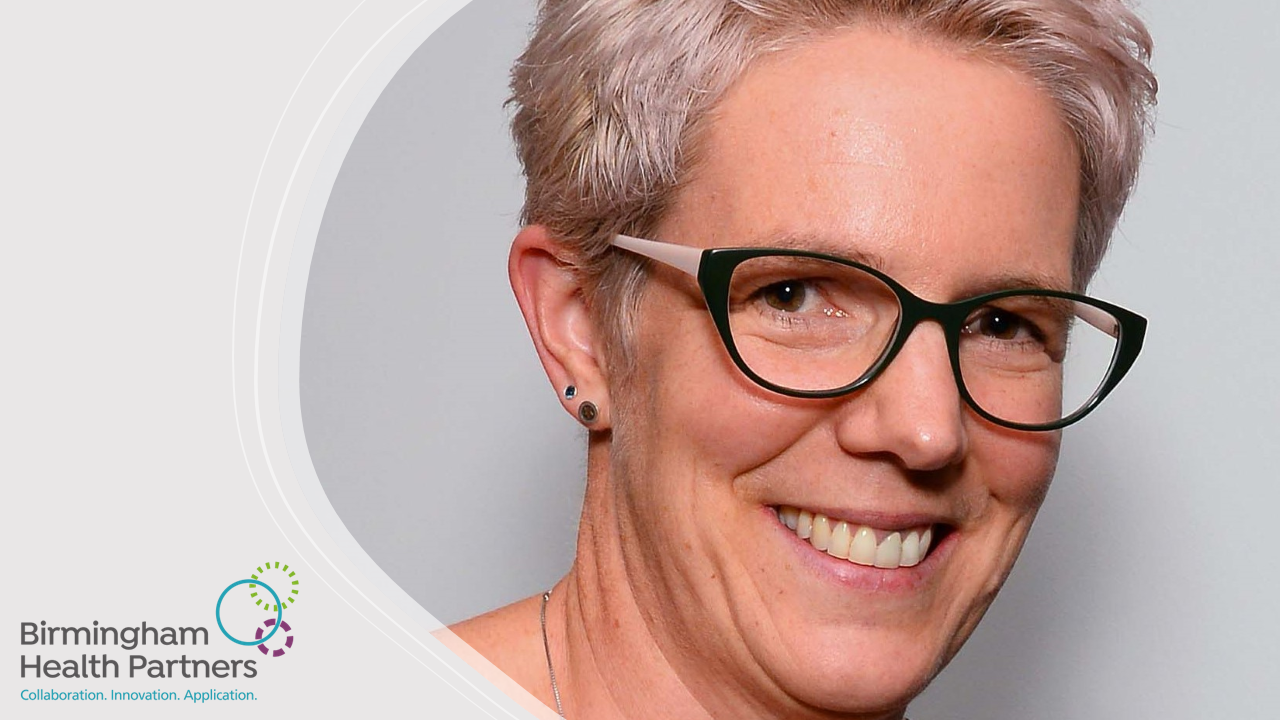
BHP People – “find your niche”
Dr Karen Crowdy, Director of Research Strategy and Operations at the Aston Institute of Health and Neurodevelopment, is one of the inaugural recipients of the new BHP People Award.
We sat down with Karen to find out a little more about her career journey to date, and how vital cross-organisational collaboration is to research in Birmingham.
Q: Can you briefly run us through your career in research and how you came to work at Aston and within IHN?
KC: I began my career in research with a PhD in Neurophysiology at Bristol University and afterwards, worked in several postdoc positions and first experienced the art of grant writing.. While I enjoyed the work, I realised that the traditional academic route wasn’t the right fit for me, so I started exploring other ways to apply my qualifications in science.
I transitioned into a role with the Natural Environment Research Council’s commercialisation team, which was quite a shift in scientific focus. There, I gained valuable experience in intellectual property licensing and spinout companies. Later, I moved to Birmingham and joined Aston University’s Business Partnership Unit as a Business Development Manager, where I focused on patents and spinouts across the university.
After maternity leave, I joined the newly established Research Support Office, bringing me back closer to research, specifically within the College of Health and Life Sciences. At the time, research support wasn’t widely recognised as a profession, but over 15 years, I’ve seen it evolve significantly, now with its own professional body, ARMA.
In 2019, Aston launched its university research institutes to enable strategic investment in research, and I joined the Institute of Health and Neurodevelopment (IHN) as Research and Operations Manager. My role has since grown to Director, where I’ve focused on building partnerships with the Children’s Hospital, regional NHS partners, and universities internationally, including through BHP. It’s been an exciting journey, and I’ve never looked back!
Q: What do you think are the key factors in building successful partnerships between institutions?
KC: For me, successful partnerships require a blend of top-down strategy and bottom-up relationship-building—something Birmingham Health Partners does exceptionally well. Communication is key, particularly in connecting the right people to collaborate on research.
It’s also important to identify practical mechanisms to help people work together effectively. For example, clinicians in hospital settings often struggle to find the headspace for research amidst their busy schedules. One approach we’re finding very useful is bringing clinicians from the Children’s Hospital to the Institute, where they can work in a dedicated research environment. Being physically embedded in this setting not only enables closer connections with our own researchers, but allows us to support them with things like grant applications, making collaboration easier and more productive. It’s all about creating opportunities and removing barriers to build relationships.
Q: The initiatives you’ve led have had a significant impact on early career researchers (ECRs). What advice would you give to ECRs starting their journey in health and neurodevelopment research?
KC: I always say to ECRs, find your niche—something you’re truly passionate about. Research often extends beyond the typical nine-to-five, so it’s crucial to love what you do.
Don’t be afraid to network and engage with others, even those you might see as more senior, like professors. At the end of the day, they’re just people, and building those relationships is vital for your growth. Be proactive, put yourself out there, and take every opportunity to connect with others in your field.
Q: Finally, what excites you most about the future of the research you’re involved in?
KC: What excites me most is the growing partnership between IHN, Aston, and the Children’s Hospital. We’re working on several ongoing projects and preparing to apply for larger funding to expand these efforts. Supporting this growth through co-funded studentships and pump-priming projects is particularly exciting. Watching these relationships develop and seeing the collaboration strengthen is incredibly rewarding, and to know that eventually these projects will lead to positive outcomes for patients is a very exciting prospect.